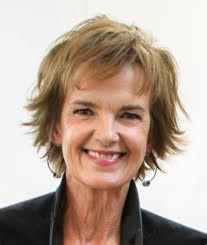'My sister Catherine shares a love of bees and has a few hives herself': James Middleton, Jamie Oliver and Sir David Beckham on the pleasures of harvesting your own honey
Beekeeping is a star-studded hobby and has much to offer, finds Jane Wheatley.
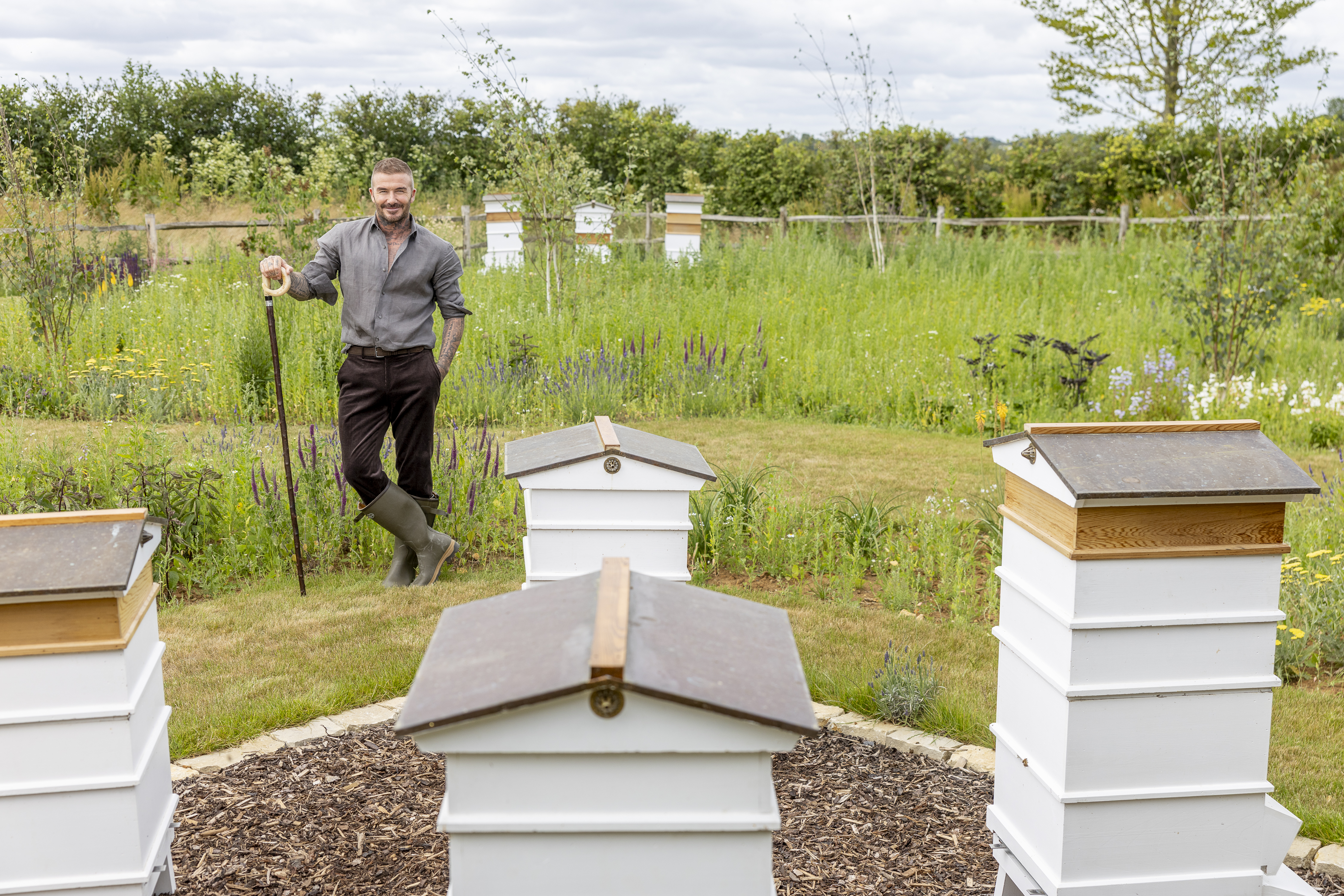

Aristotle kept bees, as did Tolstoy — his wife complained that the apiary had become the centre of his world — and Emily Dickinson wrote more than 100 poems about her beloved bees.
These days, there is a new roll call of familiar names climbing into bee suits and wielding smokers in what has become a boom time for beekeeping. The Queen and The Princess of Wales keep bees, as do Ed Sheeran, Cate Blanchett and our guest editor Sir David Beckham, who has 27 hives at home in the Cotswolds and one at his house in London.
Jamie Oliver posts updates from his bee colonies: here he is, knee deep in a meadow of ox-eye daisies and pink campion, filming worker bees building honeycomb from scratch in an empty frame. ‘Just genius,’ he marvels.
What is the allure of this ancient practice between human and bee? Honey is a natural source of sweetness and energy that, raw and unfiltered, has been harvested for millennia and never goes off. Egyptians used it to embalm and preserve the dead; it is antiseptic, antibacterial, protects the surface of wounds and is still routinely used in modern medicine.
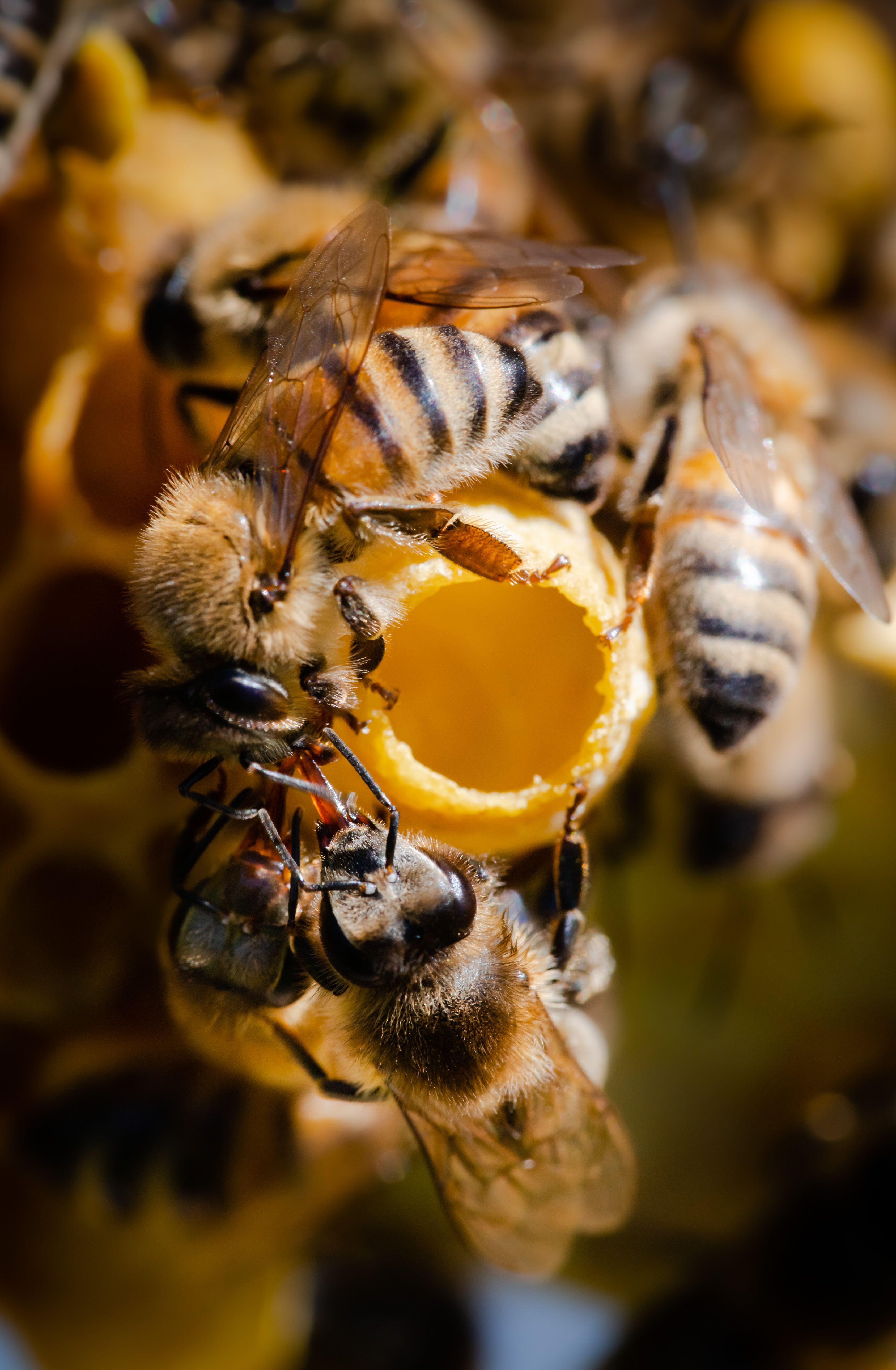
Nurse bees surrounding the open end of a queen cell with a larva inside.
Royal jelly, fed by worker bees exclusively to their queens, is commercially harvested and sold as an antioxidant and remedy for ailments from diabetes to hay fever. Bee venom is used in face creams for its anti-ageing properties, with venom from a queen bee being prized as the ne plus ultra and eye-wateringly expensive.
However, for the amateur beekeeper, the simplest pleasure is to present friends and hosts with a jar of homegrown liquid gold. James Middleton makes buckets of honey each year: ‘We eat a lot ourselves and give the rest away,’ he says, handing me an elegant jar in dark-blue pharmaceutical glass. ‘The honey is always different in colour and taste depending on the season and where the bees have been foraging.’ We are sitting in sunshine in his west Berkshire garden over-looking hives beside a meadow, just cut for hay. He was given his bees 15 years ago as a birthday present from his family: ‘I have never stopped being fascinated by them,’ he confesses. ‘I learn something every year.’
Looking after his bees was a form of active meditation when he suffered from depression: ‘If you’re in turmoil, with negative, repetitive thoughts, you can’t enter the hive; the bees know you’re not fully present and get angry with you. They send out warning bees who come for you, hitting the side of your screen. You have to be calm and methodical and speak to them.’
It’s not the best day to be introduced to James’s bees, as ‘it’s thundery and they don’t like that’, but we can still walk down to the hives at the edge of a wood. ‘It is carpeted in bluebells in spring,’ he notes, scattering a dried seedhead. ‘My sister Catherine [The Princess of Wales] shares a love of bees and has a few hives herself — I wouldn’t say it’s a competition, but we definitely compare notes,’ he reveals with a smile, pointing to the bait boxes he has fixed on the trunks of oak trees. ‘They are there to catch swarms, both my own bees and wild ones,’ he explains, before adding proudly: ‘We are teeming with bees.’
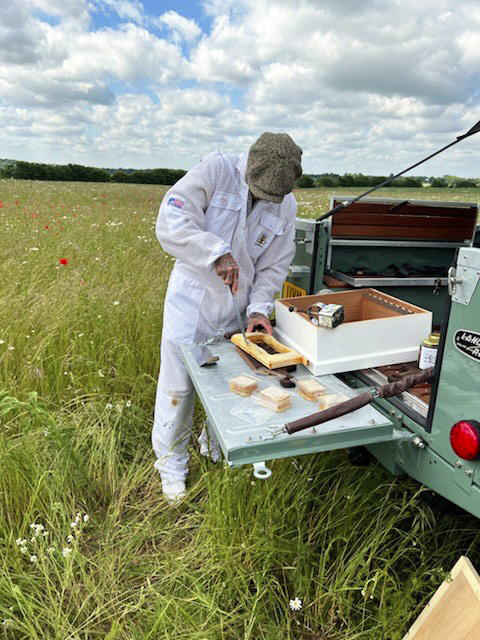
A Series III Defender offers David an ideal platform for honeycomb harvesting.
For Tristram Sutton, the honey harvest is actually the least-interesting part of the beekeeping year. Tristram has been keeping bees in his London garden since leaving his banking job in the City. ‘Beekeeping is an entry to the natural world,’ he tells me, ‘taking you outside yourself and your surroundings into a parallel universe: a highly organised, highly communicative domain of collaboration and reciprocity.’ He also finds the pastime addictive: ‘It’s all about reading what the bees are doing.’
Tristram runs courses for the London Beekeepers’ Association — most local associations offer them — and mentors people starting out with their own bees. Everyone tells me that, for the postulant beekeeper, there is nothing to beat learning from a mentor, standing elbow to elbow over the hive. However, the British Beekeepers’ Association guide is a lucid, instructive companion. It’s also possible to find useful amateur video footage demonstrating every kind of bee husbandry, from building frames to trapping a queen to splitting a large colony by conducting an artificial swarm.
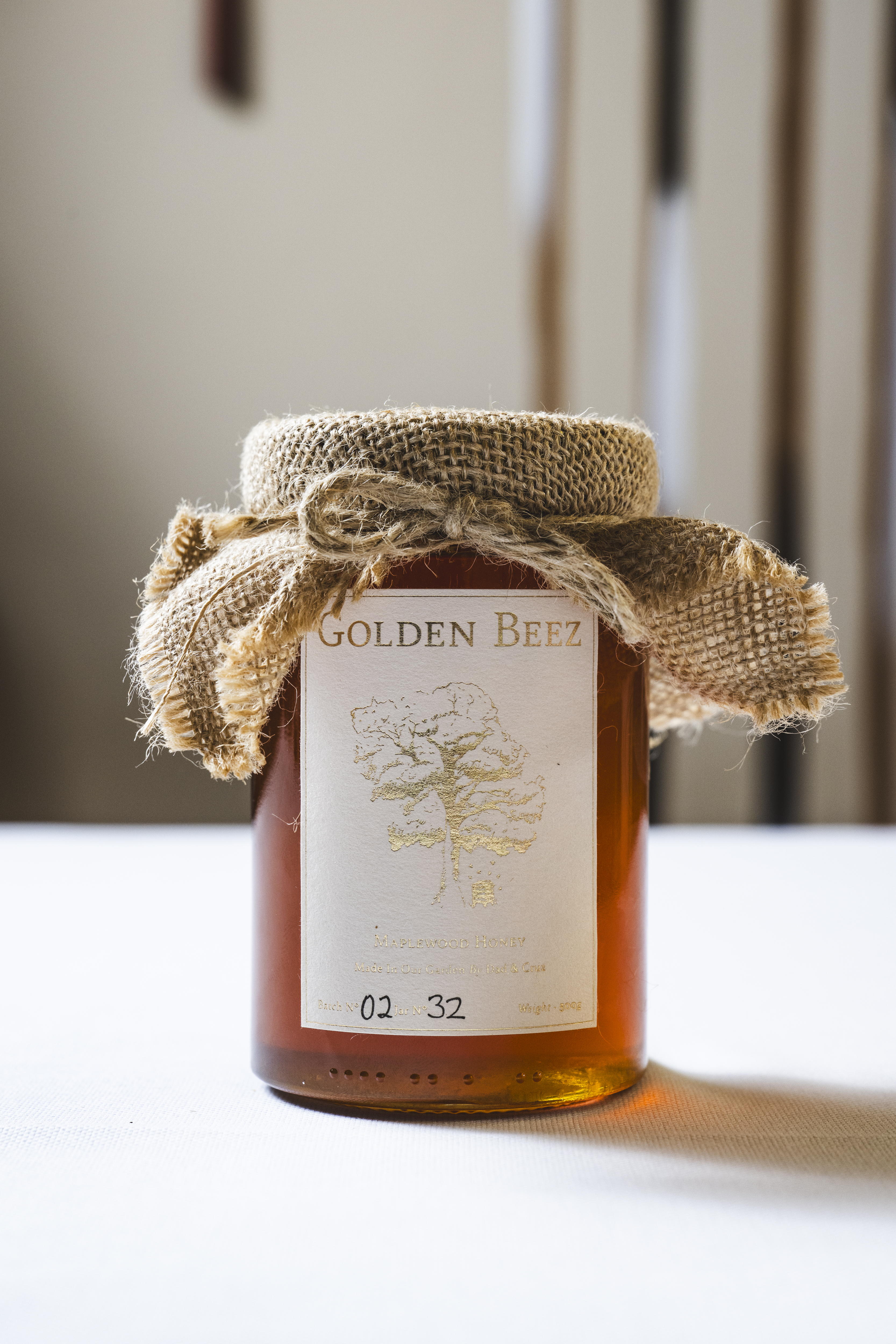
A jar of David's 'Golden Beez' honey — he started producing he foodstuff after taking up beekeeping during lockdown.
On his Just Alex series on YouTube, Alex Smith has been documenting his own three-year journey from rookie beekeeper with a second-hand hive in his parents’ back garden to his current nine colonies thriving under a horse-chestnut tree. His engaging commentary takes us through the drama of his first swarm — hooking a bunch of escapees out of a magnolia tree — to building hives to the precise measurements required for ‘bee space’. This is learning by doing and we learn by watching.
In one of the films, in which Alex shows his viewers a hive with no eggs and no queen, he explains that he’s off to Black Mountain Honey in North Wales to buy a new queen. They are good at genetics there, he tells us, so she should produce a nice calm colony. Back home, he hangs the queen in her plastic case inside the hive so the bees can get used to her scent before she’s released.
Alex then finds a hive where the foragers are returning, leg baskets bulging with orange pollen, clamouring to get in, and quickly makes a couple of extra entrance holes. Another hive has frames spilling over with honey; he needs to make a ‘super’ to accommodate more, so he visits Gwenyn Gruffydd in South Wales to buy new frames and beeswax foundation, a template for building honeycomb. You can order all this equipment online, he tells us, but he likes reconnecting with the experts who helped him start out.
Beekeping in the words of Sir David Beckham
I had no idea what I was doing at the start of my journey with the bees and I’m so lucky to have Helen Raine, a local beekeeper, to help maintain my 27 hives in the Cotswolds: she’s such an amazing teacher — I can’t get over the joy of harvesting a jar of honey. I secretly talk to my bees and honestly believe that you need to be present with them. They are unbelievably clever and I find their whole pollinating and honey-making process astonishing and magical.
Sadly, many species of bees are in decline, both from disease and loss of habitat due to intensive farming. In addition, honeybees, with their armies of foraging recruits, compete with bumblebees and other insects. The high priest of bees, biologist Prof Dave Goulson, warns: ‘As a rough rule of thumb, one honeybee colony will use all the nectar and pollen in half a hectare (1¼ acres) of flower-rich habitat.’
Beekeeping has surged in popularity in recent years and bees tend to do well from city gardens and parks; London honey regularly wins competitions for flavour. Nonetheless, when the number of hives in the city doubled in 10 years, it fuelled a backlash from conservationists who claimed that, in certain areas, there was insufficient forage to sustain the concentration of hives. ‘People had read the head-lines: “Bees in decline.” But it’s bumblebees that are in decline; putting more honeybees around merely exacerbates the situation,’ counters Tristram. It is a warning for the future, he suggests: ‘It is better to have six people looking after two hives in an apiary to keep things in balance. It’s an opportunity to do beekeeping collectively.’
This feature originally appeared in the October 29, 2025, issue of Country Life. Click here for more information on how to subscribe.
Jane Wheatley is a former staff editor and writer at The Times. She contributes to Country Life and The Sydney Morning Herald among other publications.
